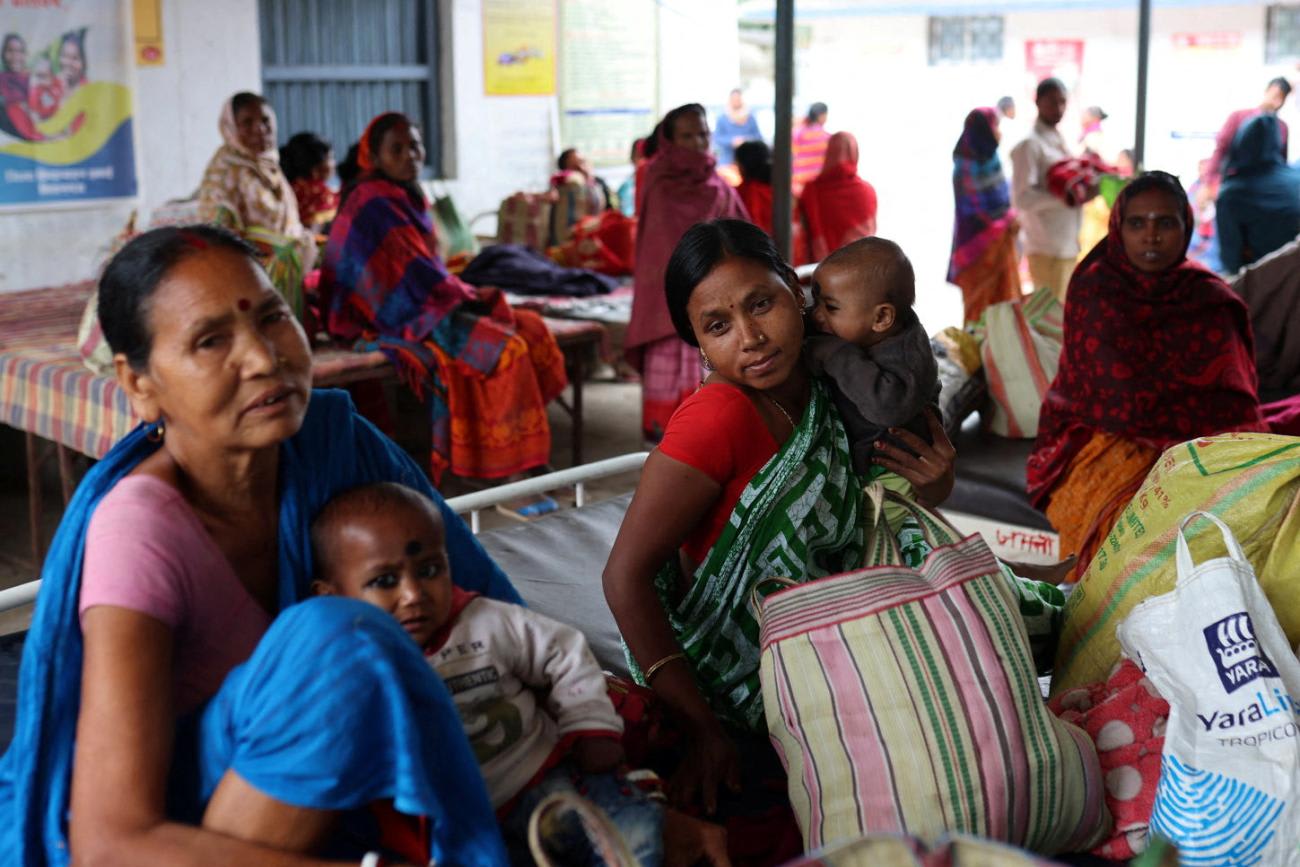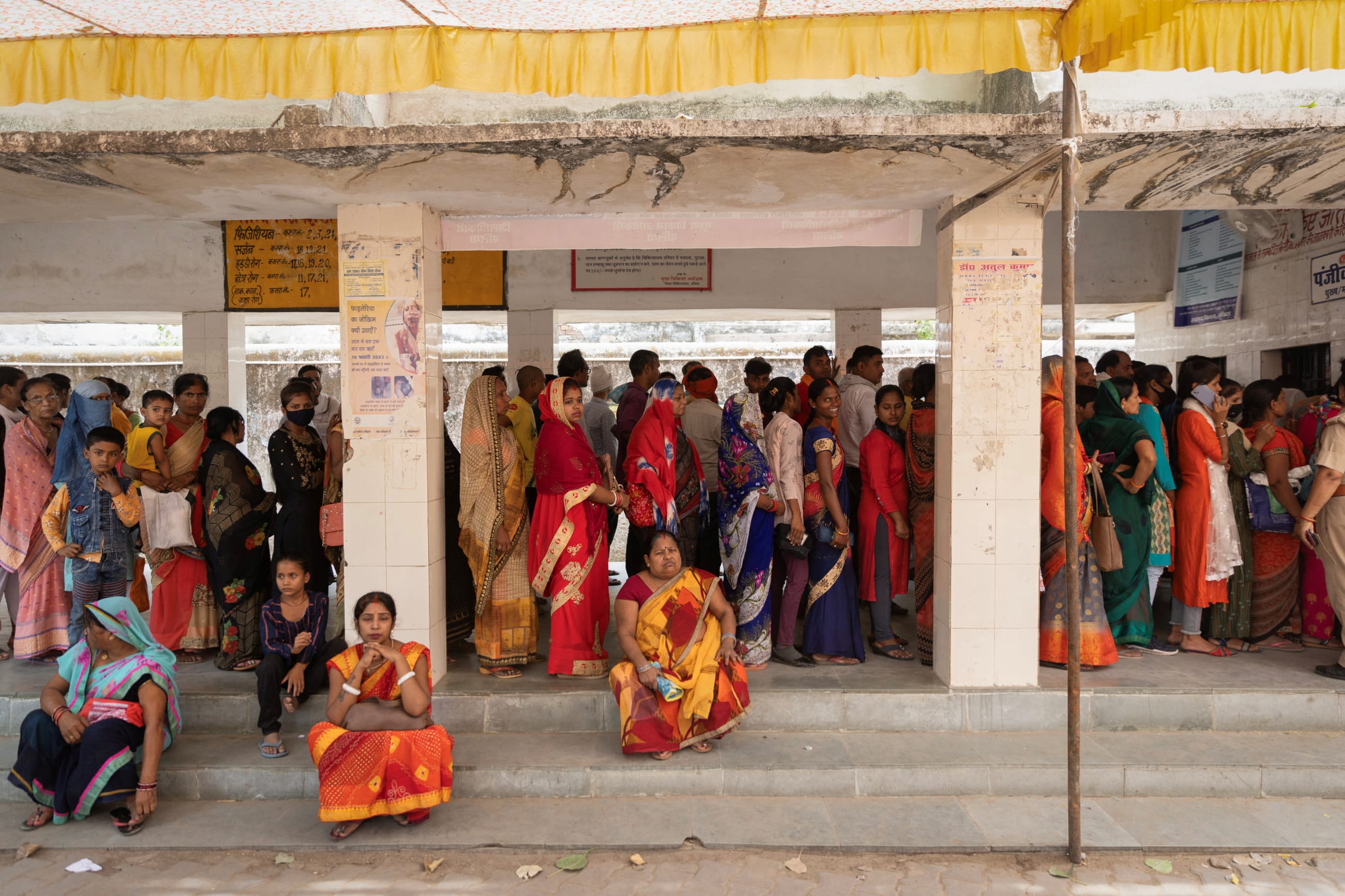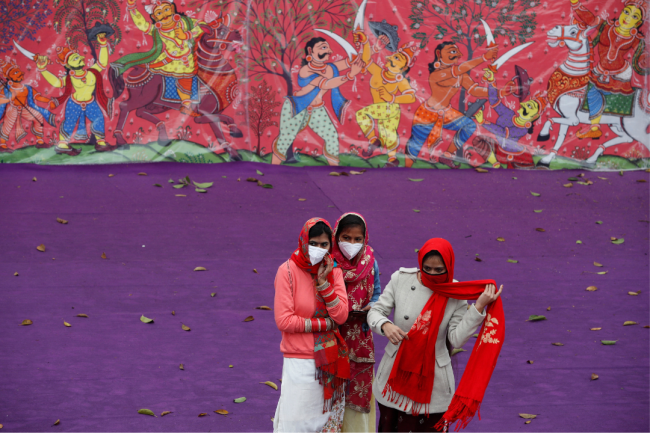Nestled in India's Sahyadri mountain range is the picturesque town of Jawhar, home to a large tribal population. Few roads cross the region and the members of this community have to travel more than 20 kilometers to reach a rural hospital with basic health-care facilities. According a recent survey in Jawhar, none of the women there have ever undergone screening for cervical cancer, which is highly prevalent in India.
Of the six hundred thousand new cases of cervical cancer worldwide in 2020, one in five occurred in India, where it is the second-leading cause of death after breast cancer. This grievous toll is largely because few women undergo screening, according to Gauravi Mishra, a preventive oncologist at Mumbai's Tata Memorial Hospital. "The incidence of cervical cancer is low in other countries not because risk factors or prevalence of causative factor are less," she explained. "It is because they examine women regularly." According to one estimate, only 2 percent of Indian women have ever undergone screening, relative to 63 percent women in high-income countries. Dr. Mishra and a group of researchers found that the rates of screening were particularly low in hard-to-reach tribal populations like those in Jawhar and nearby towns.
Only 2 percent of Indian woman have undergone cervical cancer screenings
Several factors contribute to these low screening rates. Cervical cancer, which is often contracted via sexual activity, is subject to cultural stigma in India, as it is in many places. The situation is compounded by the country's limited resources, which include few trained health-care personnel to conduct the tests and scarce equipment and lab facilities. As a result, screening strategies used in developed countries may not be feasible in India.
A common screening test is the Pap smear, in which trained personnel collect cervical cells from the patient to check for changes that may turn into cervical cancer if left untreated. Alternatively, clinicians may conduct a visual inspection with acetic acid (VIA) test, in which they swab vinegar on the cervix and look for color change that could indicate precancerous or cancerous cells. This inexpensive and fairly straightforward test is used for primary screening in India but is not free of problems. According to Kavita Anand, a preventive oncologist at Tata Memorial Hospital, the way someone interprets the results of this test is subjective, and depends on their training.
To overcome these problems, Dr. Anand and others have proposed ways for patients to help screen themselves for human papillomavirus. The virus is responsible for almost all cervical cancer cases, and a test to detect the infection may help identify women who could be at a higher risk.
This approach isn't entirely novel—researchers have used it since 2005 in various locations including the United States, Canada, and Africa. The test is nearly as reliable as other screening tests and overcomes some of their challenges. It does not require a trained professional to conduct it; women can collect samples themselves in the privacy of their homes. These samples can be handed over to primary health-care workers who can send them to a lab for analysis.

To see whether Indian women are accepting of self-sampling, a research team including Dr. Mishra and Dr. Anand introduced this test in a slum community in Mumbia. Results of their efforts, published in 2022, showed that when women were educated about cervical cancer, its risk factors, and sample collection methods, they largely agreed to collect their own samples. Furthermore, the researchers found that the quality of these self-collected samples was comparable to samples collected by trained health-care workers.
To determine whether this form of testing would be accepted by women in rural areas, the research team conducted a study in Jawhar and nearby towns. They educated women and their male relatives because previous studies suggest that involving male partners in women's sexual and preventive health-care leads to better outcomes. Because the majority of the population cannot read and write, they used pictorial content to increase awareness about cervical cancer, its risk factors, and the importance of screening to combat the threat.
The researchers found that using a family-centered, arts-based, culturally appropriate curriculum increased women's willingness to self-sample. "We got very good results that even in the tribal areas women can do self-sampling," says Dr. Anand.
The researchers found that using a family-centered, arts-based, culturally appropriate curriculum increased women's willingness to self-sample
Although this screening method is still being evaluated, these preliminary primary results point to widespread acceptance. Ananya Petkar, an independent gynecologist from Mumbai who was not associated with the study, thinks that tests where women can collect their own samples may improve cervical cancer screening rates. In her experience, even educated women who understand the importance of cervical cancer screening hesitate to undergo tests that require a vaginal examination. "There is a fear about it," Dr. Petkar said.
Because women are often skeptical about invasive testing methods, another team from Tata Memorial Hospital explored whether women would agree to a noninvasive test that didn't require a visit to a hospital. Atul Budukh, an epidemiologist who led the research team, recalled how women were hesitant to participate in a trial he helped conduct a few years ago because they didn't want to undergo a painful examination that also required them to skip work.
Women in rural areas primarily work for day-wages, and skipping work for a day would cost them those earnings. This motivated Dr. Budukh to explore whether women would undergo a noninvasive screening test that didn't require a trip to the health-care center. Inspired by a similar Chinese study, his team examined whether menstrual blood obtained from pads or cloths could be used to detect HPV. The researchers conducted this study in a few villages in the state of Maharashtra. To encourage wider participation, the team recruited local health-care workers, who helped build trust among rural women to overcome their shyness about this sensitive issue. The health-care workers collected women's menstrual pads and cloths on the first day of their period, and then transported them to a lab where they were tested for HPV. The study findings, published in 2017, showed that when women understood the test's significance, they were willing to participate.
"There is a fear about it"
Dr. Ananya Petkar
Although this screening method has several advantages, one of the primary limitations is that it can be carried out only in menstruating women, even though cervical cancer can develop in women after menopause as well. Additionally, storing the pads and transporting them to labs require resources such as freezers and dry ice.
However, Dr. Budukh said that arranging for these resources may be more cost-effective than the current practice of setting up a temporary mobile "camp" to offer preventive screenings in rural areas. That women don't have to undergo a painful process outweighs the limitations, he said. Dr. Petkar agreed, saying this method may be one of the best screening options if health-care workers can arrange for the required resources.
The test is still being validated. The first research phase confirmed that HPV can be detected using menstrual pads. The next phase, which was delayed during the COVID-19 pandemic, will focus on validating these results further.
These studies nonetheless indicate that adopting self-sampling and on-invasive tests can encourage more women to participate in cervical cancer screening and thus help catch the disease at an early, treatable stage. Such screening practices could therefore potentially strengthen the screening program in India. "Both the methods would be a blessing if we can implement it," concurs Dr. Petkar.
India is also on the verge of rolling out a HPV vaccination in a few states before expanding nationwide. Combining this effort with a strengthened screening program offers a long-term solution to the increasing cervical cancer disease burden in India.













